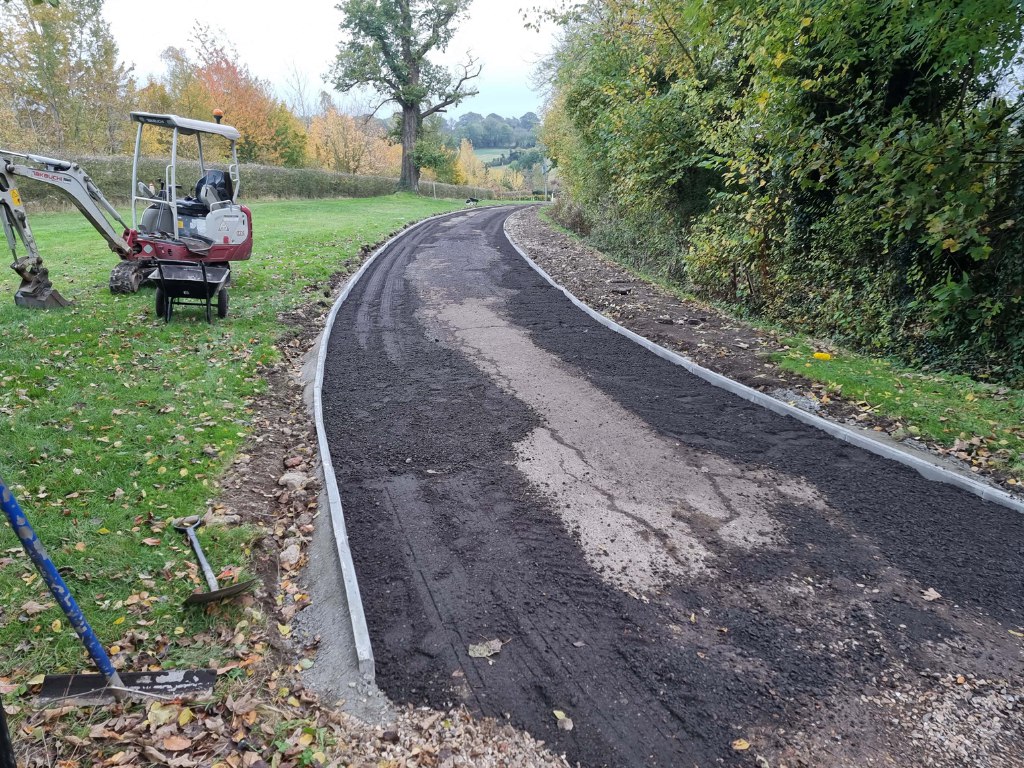How to Identify Early Signs of Wear on Tarmac Surfaces
Introduction
Tarmac driveways are a popular choice for homeowners due to their durability, smooth finish, and ease of maintenance. However, like any surface, tarmac can experience wear and tear over time. As with most materials, catching signs of damage early can help prevent more extensive repairs in the future, ultimately saving time and money. In Farnham, Surrey, where weather conditions can be unpredictable, it’s important to be proactive in caring for your tarmac surfaces.
In this article, we will guide you through how to identify early signs of wear on tarmac driveways and what steps you can take to keep your driveway looking and functioning at its best for years to come.
1. Cracks in the Surface
Spotting Cracks Before They Worsen
Cracks are one of the most common signs of wear on tarmac surfaces. Over time, tarmac can expand and contract due to temperature changes, traffic load, and weather exposure. These movements can cause small cracks to form. If left unaddressed, these cracks can grow and lead to more severe damage such as potholes or further cracking.
It’s important to inspect your driveway regularly for cracks, especially after periods of extreme weather, such as heavy rainfall or freezing temperatures. Early intervention, such as filling cracks or applying a sealant, can prevent water from seeping in, which could cause further deterioration of the surface.
2. Potholes and Depressions
Addressing Damage Quickly to Avoid Larger Issues
While cracks are a sign of early wear, potholes or depressions indicate more significant damage to your tarmac driveway. Potholes occur when cracks expand and weaken the surface, allowing water to seep beneath. This can cause the tarmac to collapse, creating a depression or hole in the surface.
Potholes can be dangerous, as they may damage vehicles or become a tripping hazard. Early identification of any depressions or loose areas can help prevent larger holes from forming. If you notice any small dips or soft spots, it’s a good idea to consult a professional to assess the extent of the damage and carry out any necessary repairs before it worsens.
3. Fading Colour and Discolouration
Maintaining Aesthetic Appeal
Tarmac driveways are known for their dark, sleek finish, but exposure to the sun, weather, and heavy traffic can cause the surface to fade over time. While fading does not necessarily impact the functionality of your driveway, it can affect its overall aesthetic appeal.
If you notice the tarmac becoming lighter in certain areas, particularly where vehicles frequently park or where sunlight is most direct, it may be time to consider re-sealing the surface. Regular maintenance and re-sealing every few years can help preserve the colour and appearance of your tarmac driveway, keeping it looking fresh and well-maintained.
4. Surface Raveling or Loose Aggregates
Preventing Further Damage
Surface raveling occurs when the top layer of tarmac begins to break away or disintegrate, causing loose aggregates to appear on the surface. This can happen as a result of wear and tear from vehicle tyres, weather conditions, or simply from the natural ageing of the tarmac.
If you notice loose stones or gravel accumulating on your driveway, this could be an early sign that the surface is wearing down. If left untreated, the raveling can lead to more severe damage, including the development of cracks or potholes. Addressing raveling early by re-sealing or resurfacing can help restore the surface and protect it from further deterioration.
5. Drainage Issues
Avoiding Water Damage
Proper drainage is crucial for maintaining the integrity of your tarmac driveway. Over time, poor drainage can cause water to pool on the surface, which may lead to erosion and other forms of damage. Standing water can exacerbate the formation of cracks, cause raveling, or even undermine the foundation of your driveway.
If you notice areas where water tends to collect or puddles form, it’s important to address the drainage issue as soon as possible. A professional driveway contractor can assess the situation and offer solutions, such as regrading the driveway or adding drainage channels, to ensure water flows away from the surface and does not cause lasting damage.
Conclusion
Tarmac driveways are a durable and cost-effective solution for homeowners, but like all surfaces, they require regular care and attention to prevent early signs of wear from turning into costly repairs. By regularly inspecting your driveway for cracks, potholes, fading, raveling, and drainage issues, you can keep your tarmac driveway in excellent condition for many years.
If you notice any of the above signs of wear on your tarmac surface, it’s essential to act quickly to prevent further damage. At NS Driveways Farnham, we specialise in tarmac repairs and maintenance, offering expert solutions to keep your driveway looking and performing at its best. Contact us today to schedule an inspection and ensure the long-term health of your tarmac driveway.
Call us on: 01252 941 699
Click here to find out more about NS Driveways Farnham
Click here to complete our contact form and see how we can help with your driveway needs.

